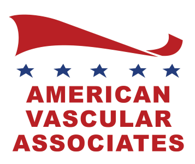Paving the Path to Your Private Practice: What You Need to Know About Opening Your Own Vascular Clinic/Lab
After years spent ensconced in the hospital setting or serving as an associate physician for someone else’s practice, you may be ready to take the leap into building a practice of your own.
It would certainly make sense, seeing as many physicians today find that opening an independent practice not only enhances their overall patient satisfaction, but also grants them greater freedom in terms of time, money, and practice methods.
The challenge, however, is building an appropriate list of step-by-step actionables to not only reach your opening day but foster long-term growth.
And if that’s what brought you to us today, we’re happy to shed a little light on what the process will involve:
Defining the Basics
Effective planning is integral to ensuring that you maintain a smooth and efficient process for building your practice. Namely, it pays to begin by formulating a business plan in addition to establishing your desired practice standards and mission statement.
“A business plan establishes your practice’s goals, and outlines your plans to achieve them,” the American Society of Regional Anesthesia and Pain Medicine (ASRA) explained. “It also helps to establish a timeline for growth. Including milestones at the one-, five-, and 10-year marks will help with the long-term vision of the practice.”
What’s more, once you know where your practice will be built, you’ll want to survey the surrounding area for existing practices — both in terms of potential competitors and potential referrals.
“Before your first day in the office, it is imperative to identify local physicians and determine their interactions with one another,” according to Endovascular Today. “Ignorance of the political landscape can lead to any number of faux pas that can take years to overcome.”
In other words, by building a network of positive medical relationships in your local area, you can secure a place for yourself in the community’s continuum of care.
Establishing Personnel & Resources
With the foundational work of building your practice complete (both physically and philosophically), the next major step is to secure the proper resources and personnel to generate a successful, cohesive workflow.
“The mainstay of a vascular lab is a reliable ultrasound machine capable of performing vascular studies,” the Society for Vascular Surgery (SVS) affirmed. “As you purchase equipment always keep in mind that the vascular lab machines should be tailored to your practice. For example, if you perform limb salvage procedures, a transcutaneous oxygen tension (TcPO2) machine would be ideal to purchase.”
Additionally, remember not to neglect the administrative technology that you will utilize on the backend. Namely, be sure to research/purchase optimal systems for:
- Medical billing
- Medical transcriptions
- Patient intake
- Practice management
- Electronic health records
- And more
Credentials, Certifications, and Contracts
Last but not least, it’s imperative to finalize the legal status of your practice.
“Give yourself plenty of time to get incorporated as a legal identity, obtain insurance and establish policies and procedures before you open,” Business News Daily recommends. “Credentialing, for example, can take quite a while and depends on the pace at which other organizations operate.”
This may involve the completion of all…
- County, state, and federal permits/licenses
- Building permits
- Physician credentials
- And more
In short, starting an independent vascular practice is no small feat. And from deciding on a practice location to completing paperwork, developing local physician relationships, and successfully marketing to potential patients, you may ultimately have more administrative responsibilities to attend to than initially expected.
But what if we told you that we could remove that burden from your shoulders?
After all, as an established expert in the vascular industry, your time would be best spent with the heart of your practice: your patients. That’s why, here at American Vascular Associates, we offer a physician-driven and patient-focused model for health care management.




